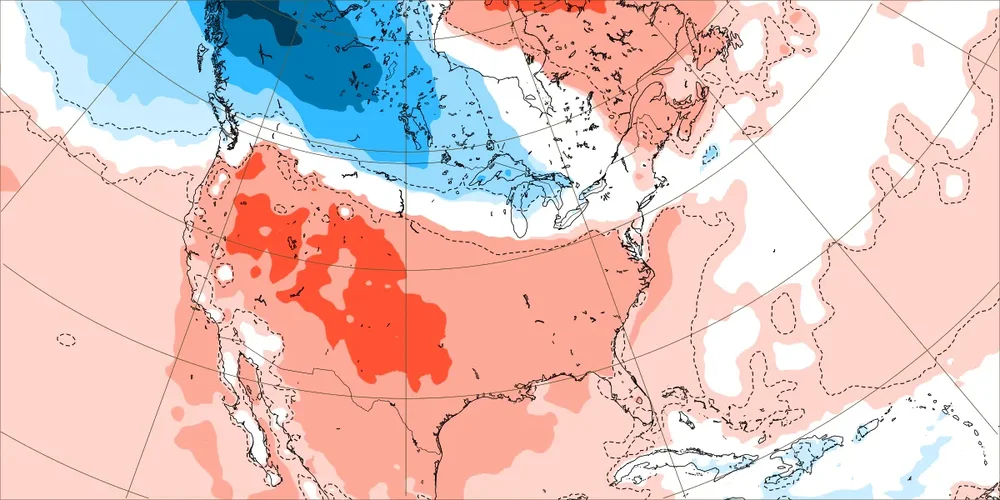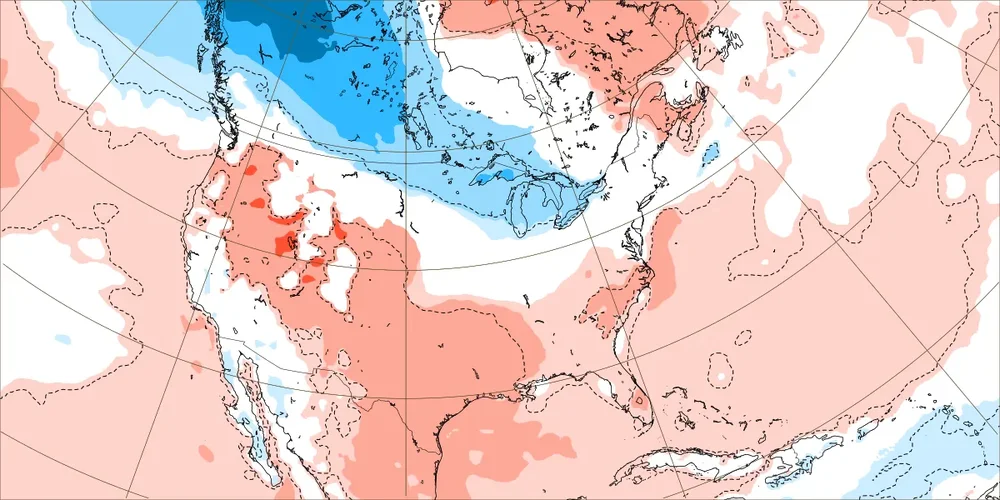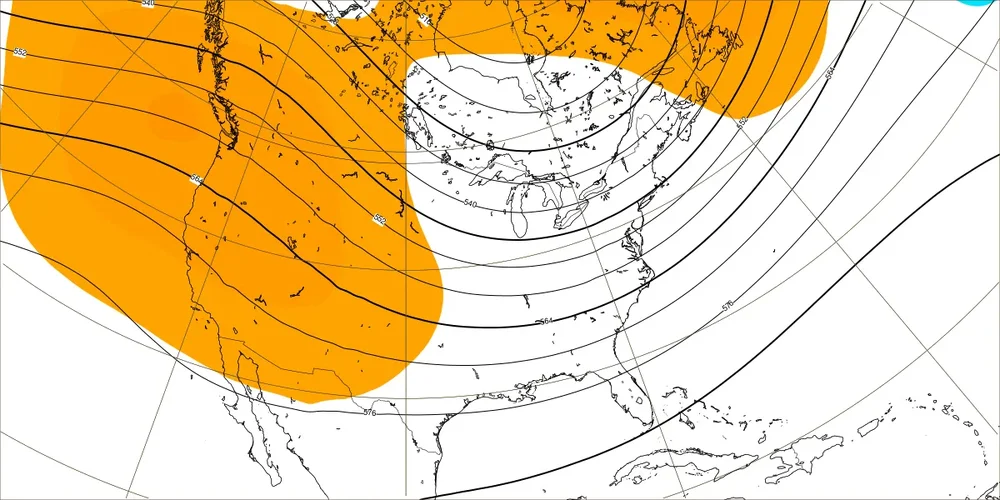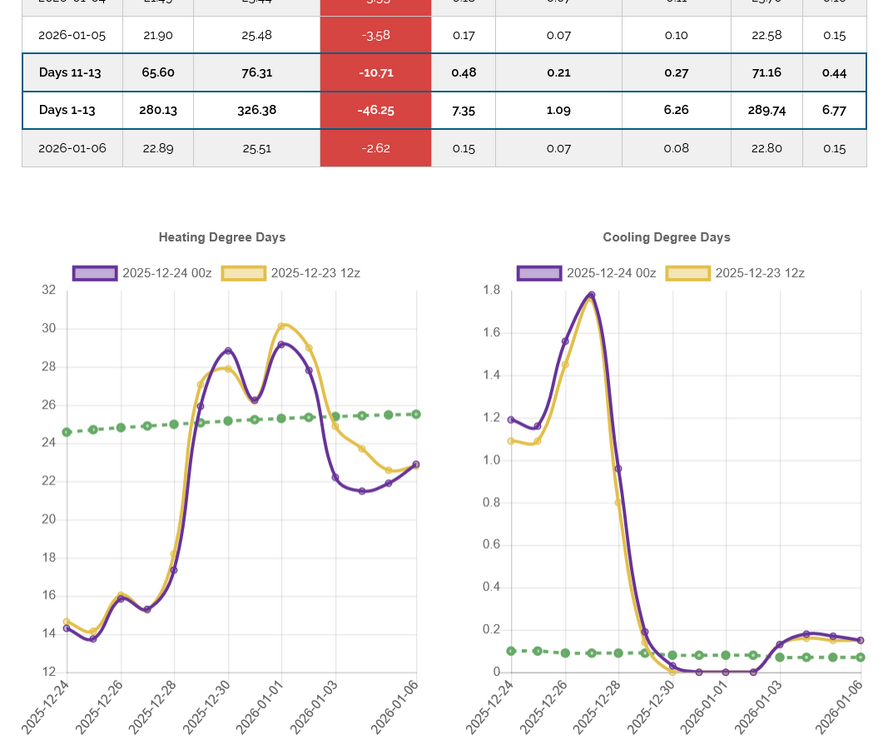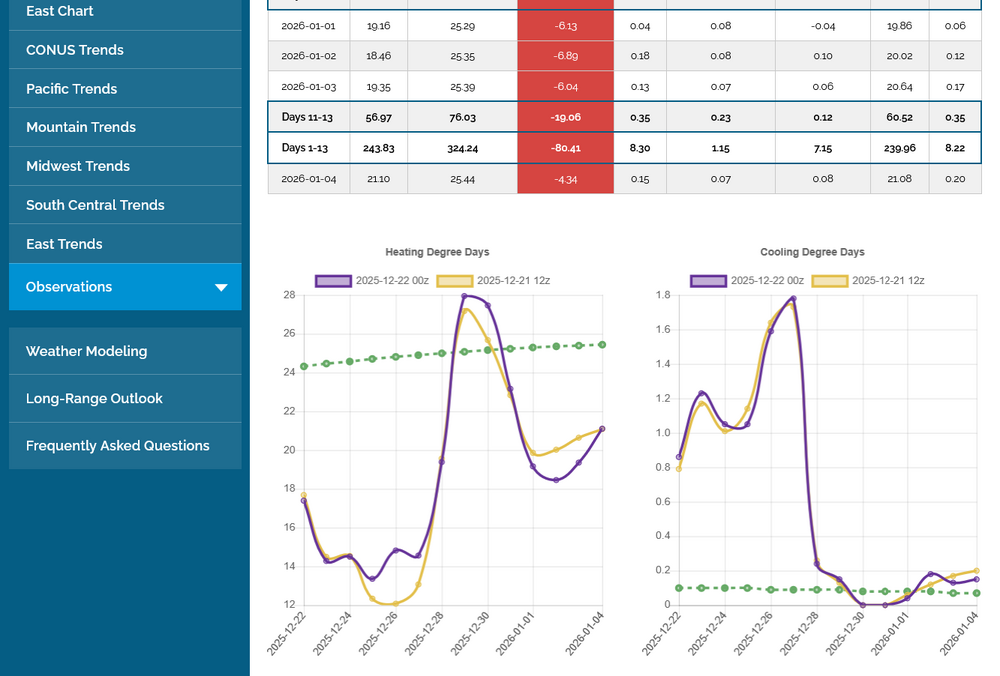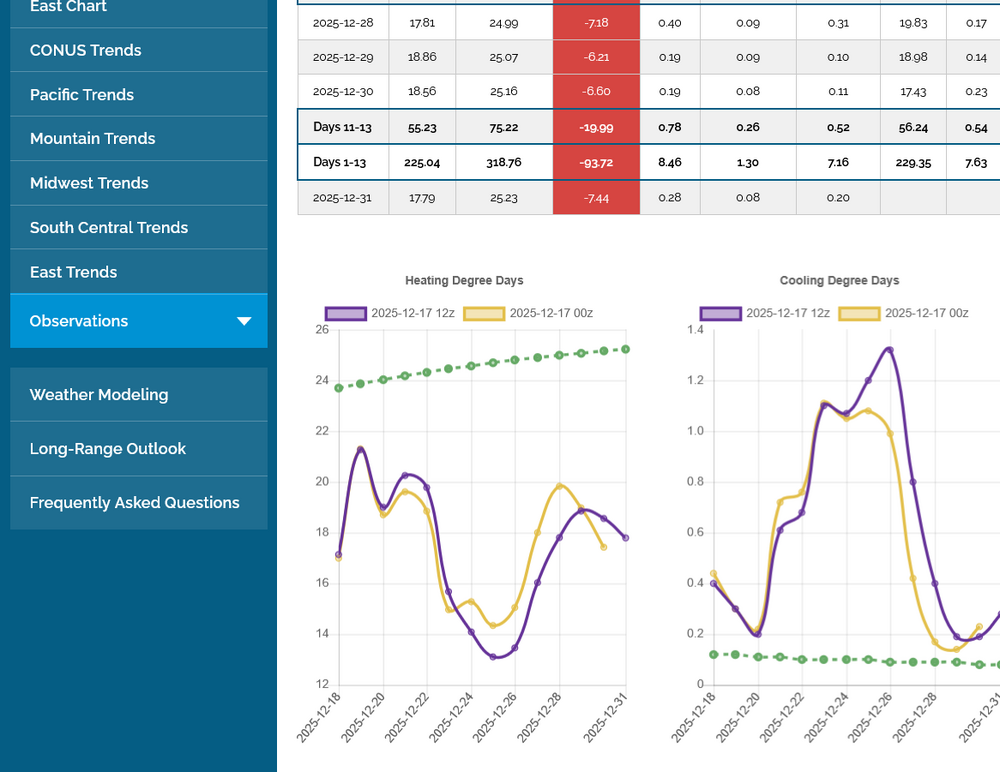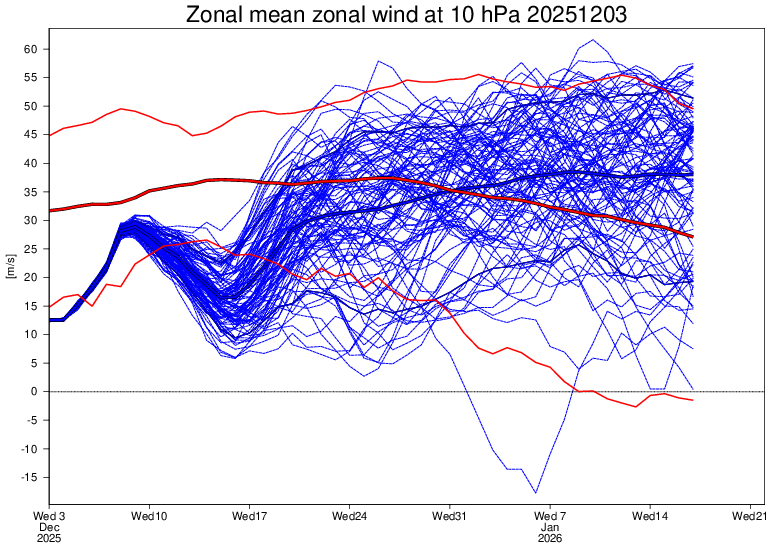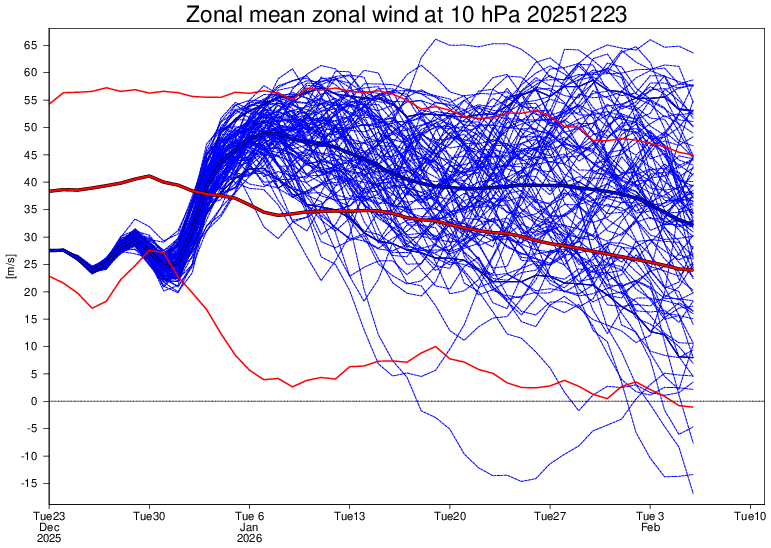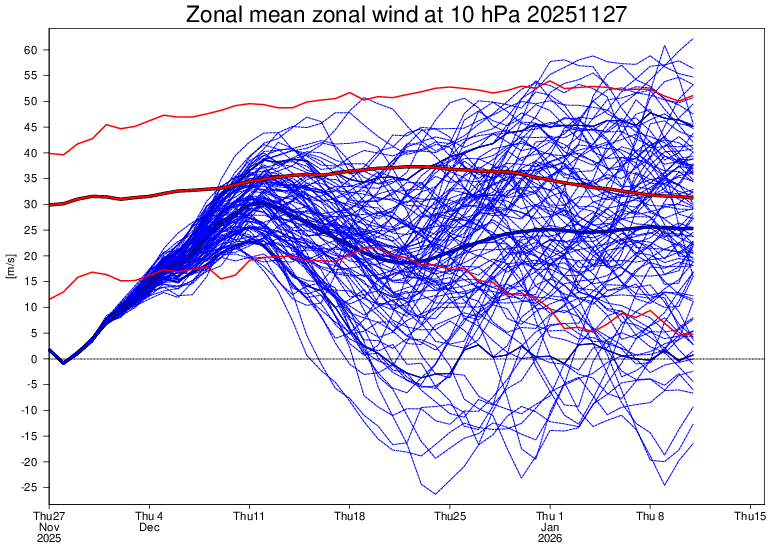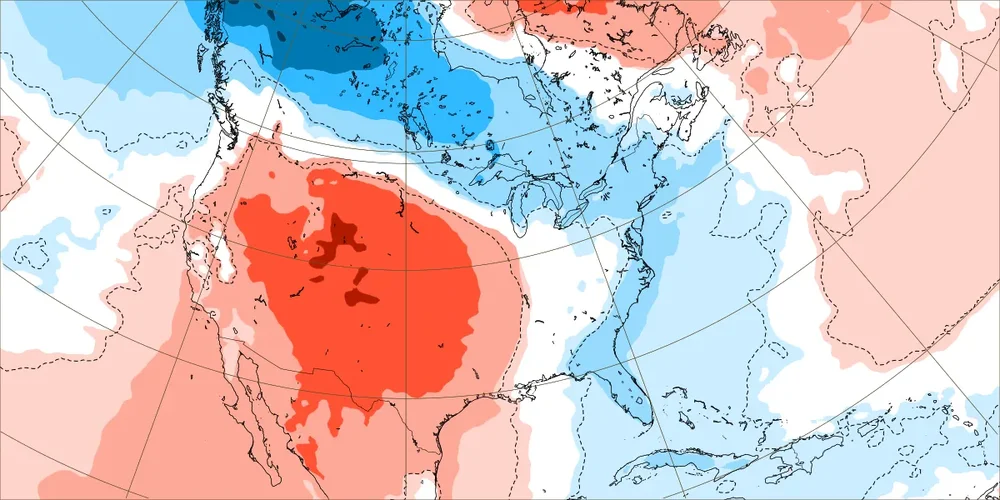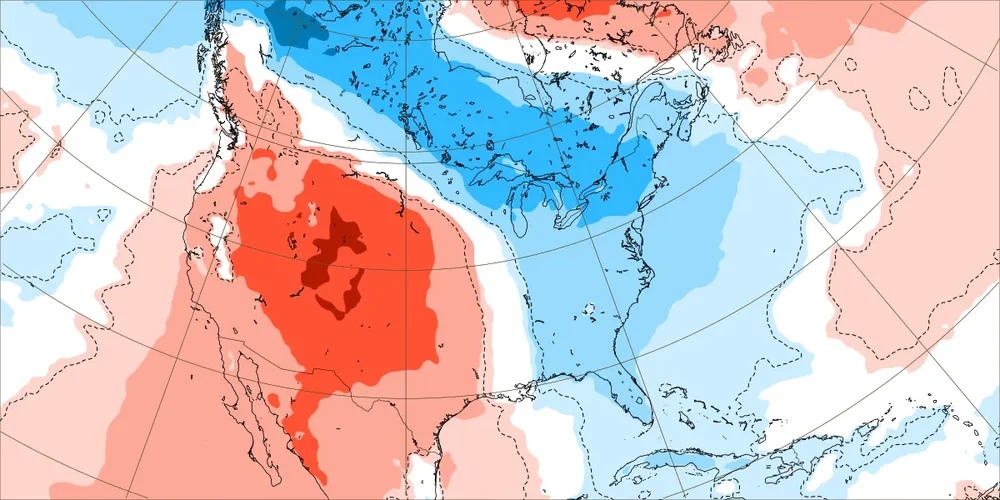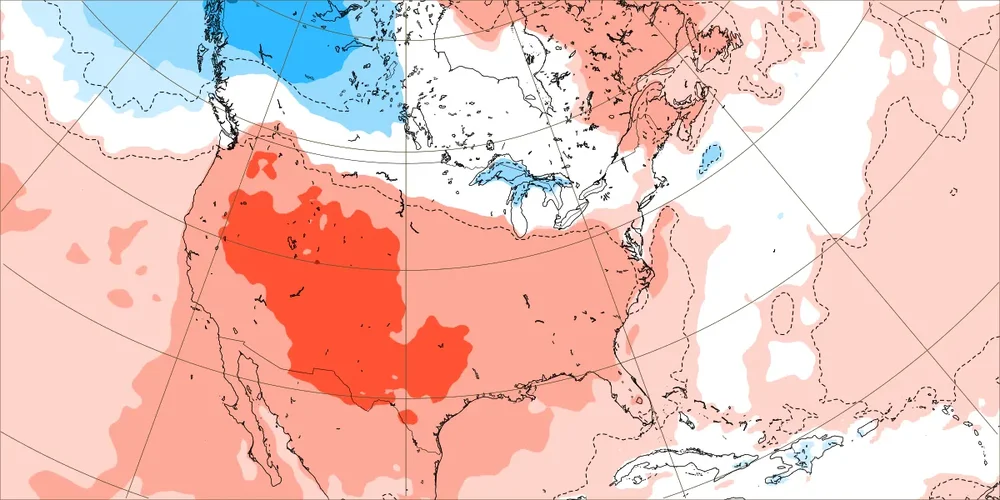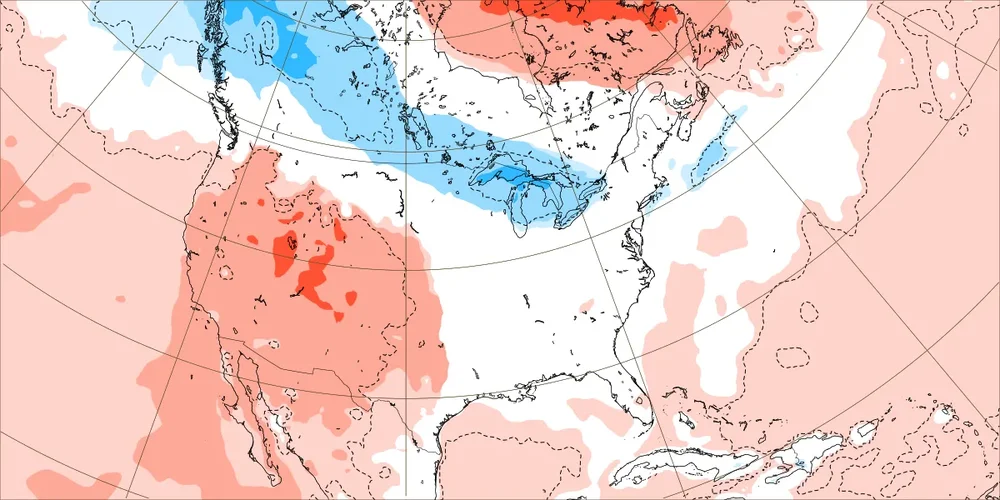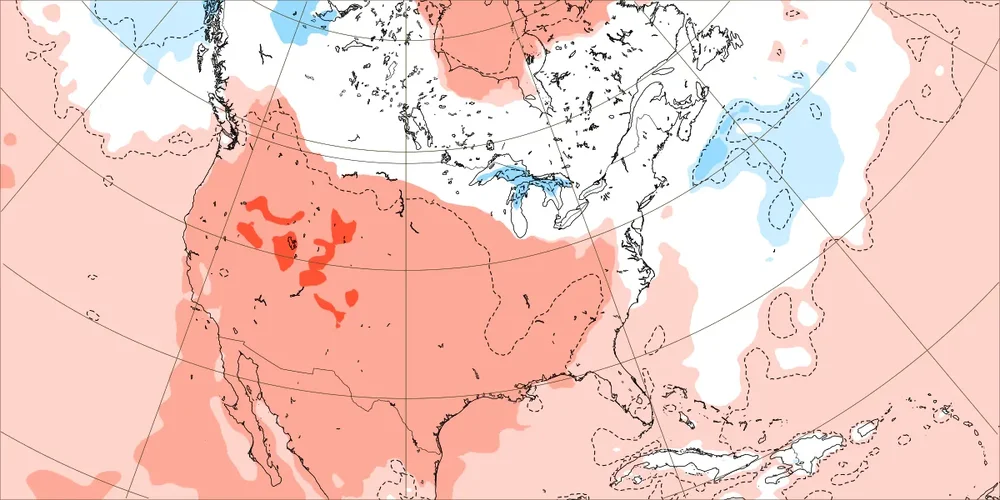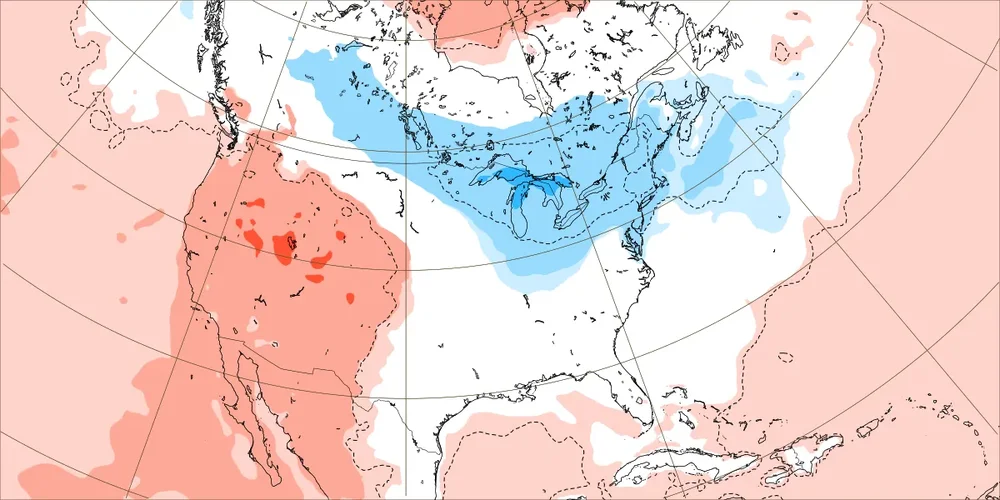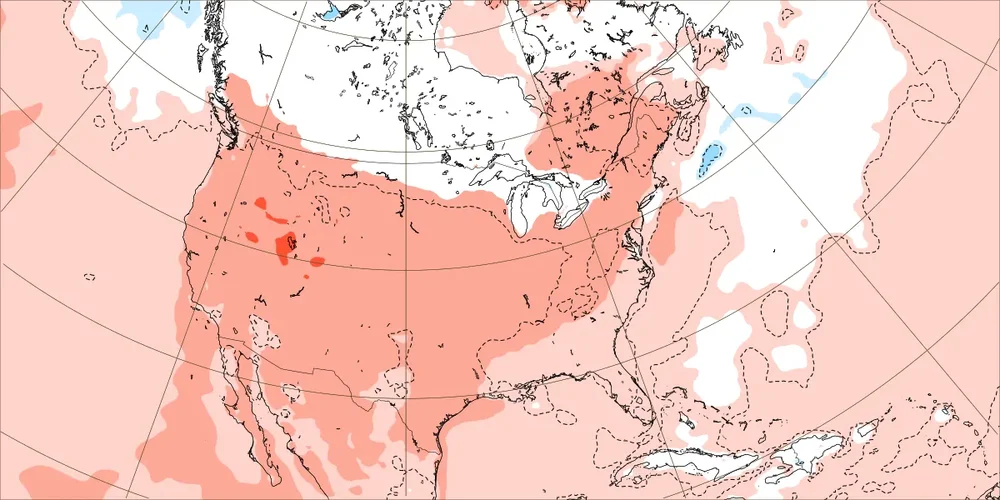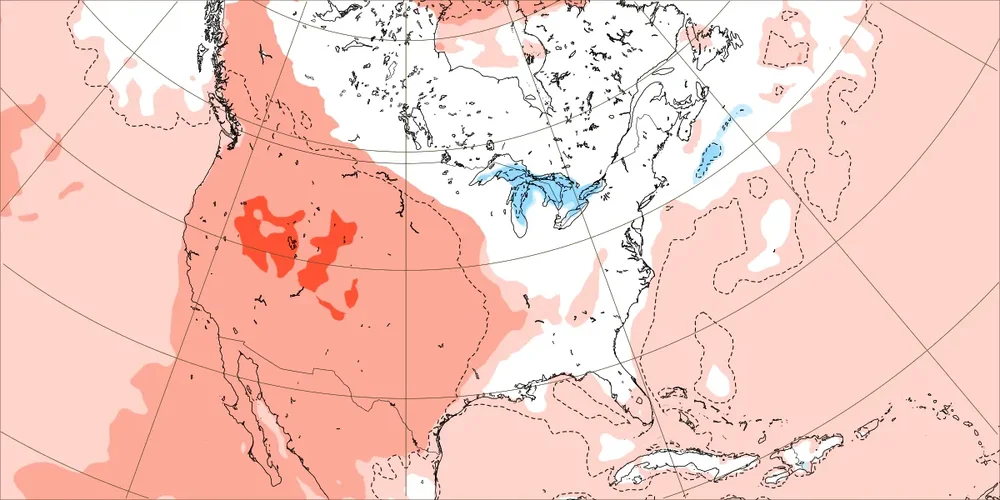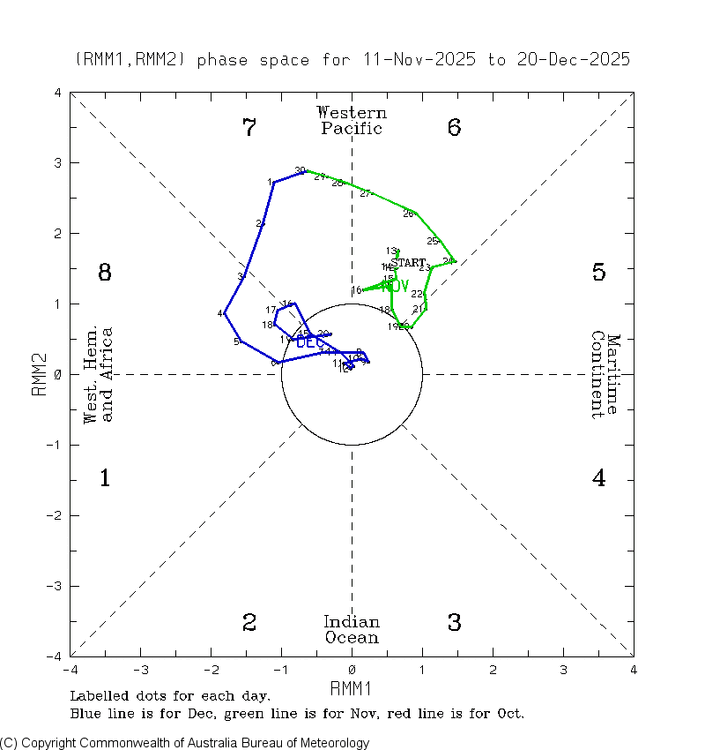
GaWx
Members-
Posts
17,689 -
Joined
Content Type
Profiles
Blogs
Forums
American Weather
Media Demo
Store
Gallery
Everything posted by GaWx
-
Today’s Euro Weeklies didn’t just hold onto all of yesterday’s widespread significant colder changes. They also cooled the only week that wasn’t cooled yesterday: Jan 5-11! Yesterday’s Jan 5-11: Today’s Jan 5-11 is below. This cooling means there are no more widespread mild weeks being forecasted in the E 1/2 of the US like there were just 2 days ago: Today’s also has a stronger suggestion of a +PNA in the means for 1/12-18:
-
Followup: As the quoted post showed, US pop weighted HDD rose sharply on the EPS from the 12/17 12Z run’s well BN 74 to the 12/22 (Mon) 0Z run’s NN 99 for 12/28-31, meaning a much colder change. What has happened on the EPS since that Mon run? - 12/28-31 has maintained 24 of that 25 HDD gain from 12/17 with it at 98 HDD - 1/1-4 has gone from a well BN 78 HDD in the 12/22 0Z run to a NN 101 on the 12/24 0Z run. And that’s even with the 12/24 0Z run not being as cold as the 12/23 12Z run’s 108 HDD! -So, just since a week ago, the EPS’ US pop weighted HDD have increased a whopping ~47 HDD just for the period 12/28-1/4 (from way BN to NN)! That is a US avg of 6F colder per day, which probably means something like 8F colder/day in just the E US, alone, since the W is probably a little warmer. 12/24 0Z HDD run left side in purple: 12/22 0Z HDD run left side in purple 12/17 12Z HDD run left side in purple: look at how warm that run was compared to today’s! All days had BN to well BN HDDs:
-
Based on the overall 0Z/6Z model consensus being not as cold in the E US as the 12Z/18Z model consensus, which had lead to ~15% gain by late evening (best day’s gain of all of 2025 so far), natural gas has not surprisingly had a good amount of selling, including profit taking, which has NG down over 4%. But that level is still 10-11% higher than the close of Monday. Let’s see whether or not the 12Z will bounce back colder. This market will likely tell us the answer without having to actually look at the models, themselves.
-
Based on your and Don’s reliable snowy La Niña Dec indicator, I’ve already predicted a near to above avg Jan+ NYC snowfall of 21”+, which would very likely mean a seasonal total of 30”+. We’ll see if it works once again.
-
Indeed, which is something I’ve posted about before. I added this right after you read my post: But a stronger than avg SPV would by no means automatically be a death sentence to a cold E US. Example: Jan of 2025 had a near record strong SPV at times. In addition to Jan of 2025, these strong SPV Jan periods were also cold and/or snowy in at least much of the E US: -2022 -Jan 1-8 of 2018, which had very cold and a very rare SE coastal snow -2016: cold around the period of the huge NE snowstorm -2014 -2nd half of 2011: big snows/cold NE -1st half of 2010 -Jan 1-17 of 2009 -2nd half of 2005 -2nd half of 2000 -1st half of 1996 -1984 -Jan 1-18 of 1981 -Jan 9-20 of 1979
-
It would be no surprise whatsoever if the Jan SPV at 10 mb is stronger than avg as that’s been what the extended EPS has shown on most runs since Dec 3rd: Dec 3rd run: goes stronger than avg ~Jan 2nd and then gets stronger to end of run (Jan 17th): 12/23 run: goes stronger than avg on Jan 3rd and stays through end of run (Feb 6th): But a stronger than avg SPV would by no means automatically be a death sentence to a cold E US. Example: Jan of 2025 had a near record strong SPV at times.
-
But it then goes back down into the troposphere?
-
A number of folks are confused by the term “Weeklies”. They’re currently called that not because of the frequency of issuance but rather the in-house maps are for one week at a time and also they go out 5-6 weeks. Going back a number of years I know they were issued only twice a week on Mon and Thu. I can’t recall if they were issued only once a week going further back. I’m leaning that way though. Maybe on Mondays only originally? The more I think about it and try to recall, the more positive I am that they started out being issued only once per week. ————— KSAV had 75 today. The forecast is more 75s every day through Sunday. That would give us 6 days in a row of 75ish. Then the bottom falls out on 12/29!
-
BAMwx met Brett Waltz with update this morning:
-
Hey Chuck, I don’t remember whom and you may not have said it, but I remember a number of posters and/or tweeters saying that the 11/28/25 SSWE was a “reflected” or “reflective” SSWE and that that meant it wouldn’t translate down to the troposphere. I don’t understand what that means, but rather I remember it being discussed and that that was bad news. What do you know about this or do you know anything about it? Does this mean it really wasn’t reflective or reflected (whatever the correct term is). TIA
-
But obviously even if it hadn’t barely dipped below the 0 line, we know that that’s academic. Even if it had dipped only to, say +1 or +2, do we really think that that would have made a difference? After all that likely would still have been the weakest that early since 1968 and would have still been a a very impressive whopping 30 below avg. So, 30 below vs 31 or 32 below. But anyway, I pointed out that it officially barely reversed per the Euro to keep the record straight. Thus, I feel 11/28/25 will likely be added to the list of official major SSWs.
-
Ray, You may need a magnifying glass to see it, but it was just barely an official zonal wind reversal at 10 mb….but only barely (at ~-0.5 m/s per Euro on 11/28/25) after the 11/24/25 initial dip barely failed:
-
I don’t think that it’s an exaggeration to say that today’s Euro Weeklies colder changes in the aggregate for the E US are at least near the largest I can recall this entire season with 4 of the 5 weeks notably colder and only the other (Jan 5th-11th) staying about the same (pretty mild). If you want to look specifically at the big changes in the ecmwf in-house maps, themselves, vs yesterday, you can go here to the main ENSO thread:
-
December 2025 Short/Medium Range Forecast Thread
GaWx replied to John1122's topic in Tennessee Valley
I don’t think that it’s an exaggeration to say that today’s Euro Weeklies colder changes in the aggregate for the E US are at least near the largest I can recall this entire season with 4 of the 5 weeks notably colder and only the other (Jan 5th-11th) staying about the same (pretty mild). I’ll leave it to @Carvers Gapto post more about them as he normally is thorough communicating about them here. But if you want to look specifically at the big changes in the ecmwf in-house maps, themselves, vs yesterday, you can go here to the main ENSO thread: -
I don’t think that it’s an exaggeration to say that today’s Euro Weeklies colder changes in the aggregate for the E US are at least near the largest I can recall this entire season with 4 of the 5 weeks notably colder and only the other (Jan 5th-11th) staying about the same (pretty mild): 1. Week 1: Dec 29-Jan 4 Old: New: colder although already expected 2. Jan 12-18: Old: New: 3. Jan 19-25: Old: New: 4. Jan 26-Feb 1: Old: New:
-
Hey Chuck, Ignoring end of month highest volume contract changes, contract expirations and other misleading daily changes at investing.com, it appears to me when looking at investing.com daily data that today’s ~11% legit rise of natural gas may be the single highest legit rise in a day in all of 2025! What do you think?
-
Natural gas is now up 10% due to the models’ much colder late Dec and now early Jan vs what last week’s models showed! If this holds, it would easily be the strongest single day since at least August. Keep in mind that NG’s strongest days are usually when the E US two week forecast is looking colder than the prior day: Natural Gas (NGF6) Real-time derived Currency in USD 4.376 +0.411(+10.37%) Real-time Data·13:51:34
-
It has almost always looked like the E US will go warm in the 11-15+ day as illustrated well by the @bluewavepost showing the persistent E US warm bias on the 3 major ensembles in the 11-15 day period, even including the normally cold biased CMC ens (averaged out over the last 90 days).
-
Good news. Eric Webb, who recently had been pessimistic about January due largely to the Pacific warm pool not moving eastward enough, sounds like he’s likely about to come around to being bullish instead: I just asked Eric this on another public BB: Eric, “Are you having second thoughts about your recent pessimistic warmth for January? I’m sensing a tone change in your most recent posts.” His answer is very nice to see: I'd definitely say so, especially early on. Taking a gigantic L on the big warm-up late December, thanks to this huge -NAO trend in the medium range. Some of those takes I've had are aging as badly as the egg nog you accidentally left in the back of your fridge from last Christmas. @snowman19since you’ve been posting his pessimistic posts
-
It’s still very early but: Could this end up still another +PNA Jan following a -PNA Dec during -ENSO, which has pretty much been the case since 1983-4? Bet the streak? 2021-2 analog FTW perhaps? @40/70 Benchmark This last post by @bluewaveabout strong warm E US biases in the E US in the 11-15 the last 90 days is very significant!
-
Natural gas is up 4% today, which I assume is due to the model consensus again correcting colder continually due to not seeing E US cold well that’s over one week out.
-
The MJO’s 3rd phase 8 period of the month ended on 12/20, when it went into phase 7. So far this month there have been three phase 8 periods: - Dec 3-7 - Dec 15 - Dec 17-19 Will there be more?
-
I don’t know why the NAO and its influence has been underdone on the models, but these kinds of things make forecasting discussions so interesting. Just think if the models were all knowing. The discussion would be pretty boring.
-
Look at how much Dec 29-Jan 4 has cooled vs 2 days ago on the EPS thanks to the stronger -NAO pushing back from the NE despite the strong Aleutian ridge remaining. Two days ago: Today:
-
Jan 2022 is an analog.

